 |
 |
|
 |
 |
|
 |
|
 |
|
 |
|
 |
|
 |
|
 |
|
 |
|
|
|
|
|
 |
|
 |
|
|
|
|
|
|
|
| The Composting Process |
|
| Click any picture to enlarge. |
|
 |
|
 |
|
|
|
Municipal waste water treatment plants concentrate organic wastes and produce a sludge of biosolids. We transport this material from the sewage plants in specially constructed trailers and trucks. |
|
|
|
|
 |
|
 |
|
 |
|
 |
|
 |
|
 |
|
 |
|
 |
|
 |
|
|
|
|
 |
|
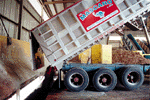 |
|
 |
|
 |
|
|
| Another specialized truck is shown here unloading sewage sludge. Our trucks are built with heated bodies, sealed gates and spill resistant covers and numerous other safeguards. |
|
 |
|
 |
|
|
|
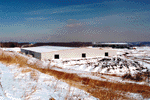 |
|
|
|
|
|
| Mascaro composts year round indoors in state-of-the-art facilities like the Brooke County Compost facility shown here. This modern plant , located in West Virginia, has an enclosed compost area larger than six football fields. |
|
|
|
|
|
|
|
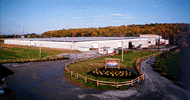 |
|
| A&M Compost, located in Lancaster County, PA, has more than five acres under roof. It is where we pioneered biofiltration technology to remove odor from the composting process. |
|
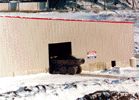 |
|
|
|
| A feeling for the size of the compost buildings is offered by this picture of a giant earth mover entering one of the 21 foot high doors at Brooke County Compost Facility. |
|
|
|
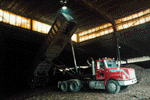 |
|
|
When the sludge arrives at one of our plants (in this case A&M Compost) it is weighed and then unloaded. |
|
|
|
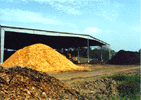 |
|
|
|
| Wood chips like these are used as a bulking agent. They are combined with the sludge to make a mixture that air can easily flow through. |
|
| Click any picture to enlarge. |
|
|
|
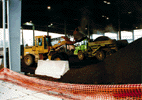 |
|
|
|
Chips and sludge are mixed and prepared for composting. During composting, the biosolids are broken down and their nutrients made available for plants. The works is done by bacteria. |
|
|
Inside the compost building, temperature and humidity are electronically monitored and controlled. The compost is aerated both by turning and by forcing air through it. |
|
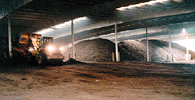 |
|
|
|
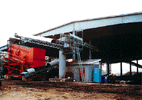 |
|
| After the composting, which takes about 60 days, the material is screened using a machine like the one shown here. This removes the uncomposted parts of the wood chips, and readies the compost for use. |
|
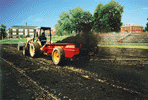 |
|
|
|
|
| The finished compost may be used for a wide range of landscaping, soil enhancement and horticultural applications. |
|
|
|
|
|
|
|
|
|
|
|
|
|
|
|
|
|
|
|
|
|
|
|
|
|
|
|
|
|
|
|
|
|
|
|
|
|
|
|













